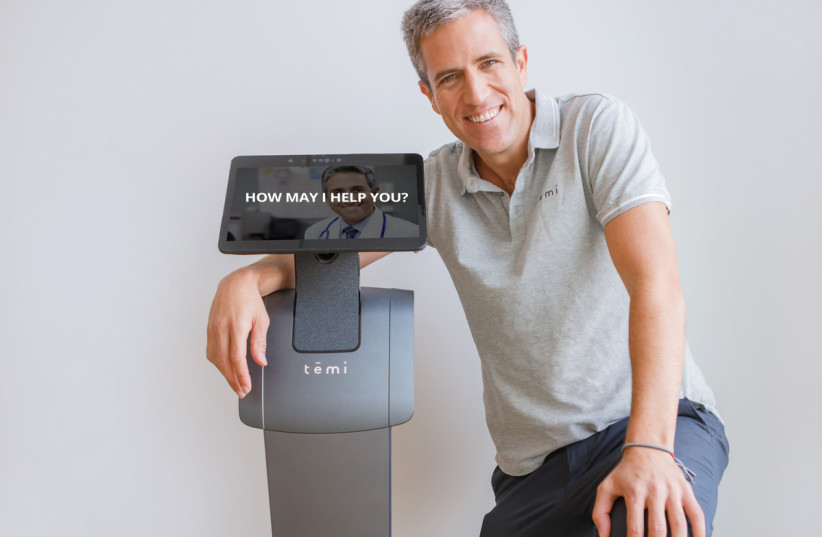At present, service robotics is a limited industry. While my mother-in-law’s iRobot is trying its best to advance the industry by bumping around the floor and swallowing dust and crumbs, we are still many iterations away from robot maids mopping our floors while ironing our shirts and preparing breakfast with a smile, a la The Jetsons.I paid a visit to temi, the developers of a service robot that takes another step toward the next generation of in-home service robots. In terms of design, their proprietary product (also called temi) is essentially a Roomba with an iPad attached to it, but the software and utility behind the machine grants it a fair heap of legitimacy.At its core, temi is a server. Its primary utility manifests in the shape of a small table just below its screen, placed conveniently at table height. The idea is that by utilizing the machine’s software, you can tell temi to follow you, meet you somewhere, or bring something you place on its table to someone else.
The device utilizes a host of sensors, cameras and other hardware to identify people (even recognizing their faces if allowed), follow them around, take video calls, and speak to them via Amazon’s Alexa. (It’s the first Amazon-certified robot in the world, its creators proudly told me.) Temi’s software also allows for developers to create apps for the device. Assuming they want to do so, this opens up its potential significantly.During the demo I received, I was fairly impressed by temi’s ability to spot me as I walked in the door, approach me with a greeting, and ask if I’d like its help with anything. Moments later, as it followed me around the office playing King Crimson tracks, I understood some of the benefits of having this kind of portable media machine at my beck and call. For one, video calls with siblings overseas while preparing dinner wouldn’t mean having to balance my phone precariously over the stove, thanks to temi’s keen ability to hang out just out of the way.
THERE WERE some hiccups in the tech demo I received. Temi didn’t quite understand a command or two, or was told to follow me but then got distracted and gave chase to one of the office inhabitants who strolled by. But the machine is definitely a step in the right direction for service robotics.The resounding question of “Okay, but do we actually need it?” remains to be answered, but if we as a society decide the answer is “Sure, why not?” then temi will suit the bill for now.I sat down with Yossi Wolf, temi’s co-founder and executive chairman, who told me about the design philosophy behind creating their practical service robot.What spurred the idea to create temi?“I bought a walking device for my grandmother during a visit. She was 85 years old. She said, ‘No, that’s for old people, I don’t want it.’ I asked her, ‘What about a robot?’ She said, ‘Yeah, that sounds cool.’ So that’s where my market research ended. And I decided to devote my life to it.”How do you explain the use-case of temi? Why is it useful at all?“I would say that this is kind of the iPhone of robotics. You have a platform that is well designed, and it’s at an affordable cost, and it is really intuitive to use. The idea is that you have use cases in the world in general, in the home and the business, where movement is involved in accomplishing a task – and temi can help eliminate the need for repetitive movement.”In designing this thing, was there any fear about entering the ‘uncanny valley’ – the psychological middle ground between ‘clearly fake’ and ‘very realistic?’ On the other side of that coin, was it difficult to decide not to make temi look more human?“We decided to come from a different perspective, to come from the software side. So instead of doing, you know, hands, legs, gimmicks – very expensive toys – we said, we can do great software, let’s do it from the software side. And let’s do the lowest cost possible. And this was the key. So we turned it into a machine, again, very much like the iPhone. It’s mostly about its software, and the hardware is just the carrier.”

